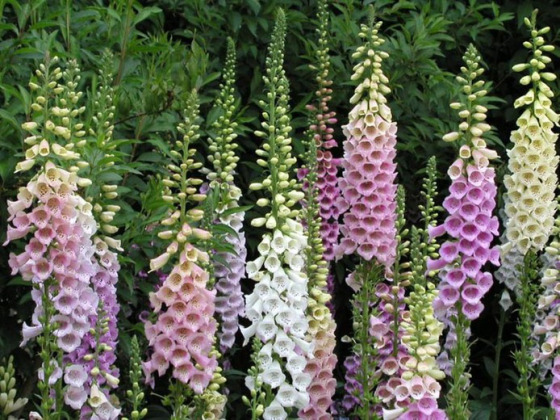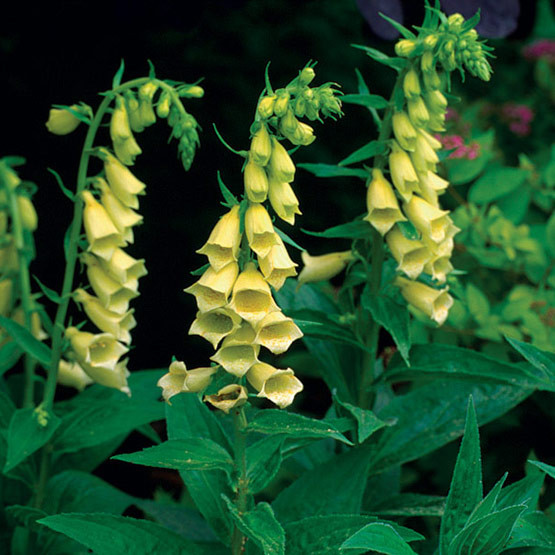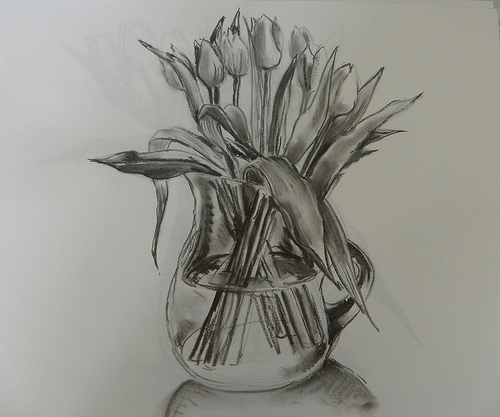
One of my favourite all round plants is the foxglove. Many regard the common or garden Digitalis purpurea as a weed and a bit of a pest, which I find bewildering. These spires of nodding bells in pink, purple or white grow to over a metre tall, seem to grow in any conditions – damp, dry shade or full sun and will thrive in the poorest of soils. The add colour, height and depth to the garden and are terrific fillers for early summer when grown in spots where asters and other late-summer and autumn plates will take the baton when they have finished. They seed freely, some think too freely, but the seedlings are easily identifiable, easy to remove so can be moved, or potted on for the following season. Technically they are biennials, growing a rich rosette of evergreen leaves in the first year and flowering in the second, but some flower in their first year and others will flower again. If you want to grow only the white versions, check the underside of the leaves, if they have any pinkish colouring they will grow pink or purple, pure green leaves indicate a white plant. There are fancier versions of foxgloves, but inevitably they are trickier and fussier, and only a few are as jolly and full of summer as the wild version. The most attractive of these, to my mind are the ‘interspecific hybrids’ – in other words they don’t fit into any particular category, generally having hybridised themselves from mixing with purpurea. Some of these are beautifully spotted – white with deepest purple markings or polka dots of pinks and apricots. Another favourite is Digitalis grandiflora, a plant with large, yellow open bells of flowers.

I am adding a picture of a digitalis seedling, so you will recognise it in your garden. If you grow Phlomis russelliana, the seedlings look very similar, but the Phlomis is rough to the touch, whereas foxgloves are soft and a bit fuzzy.






